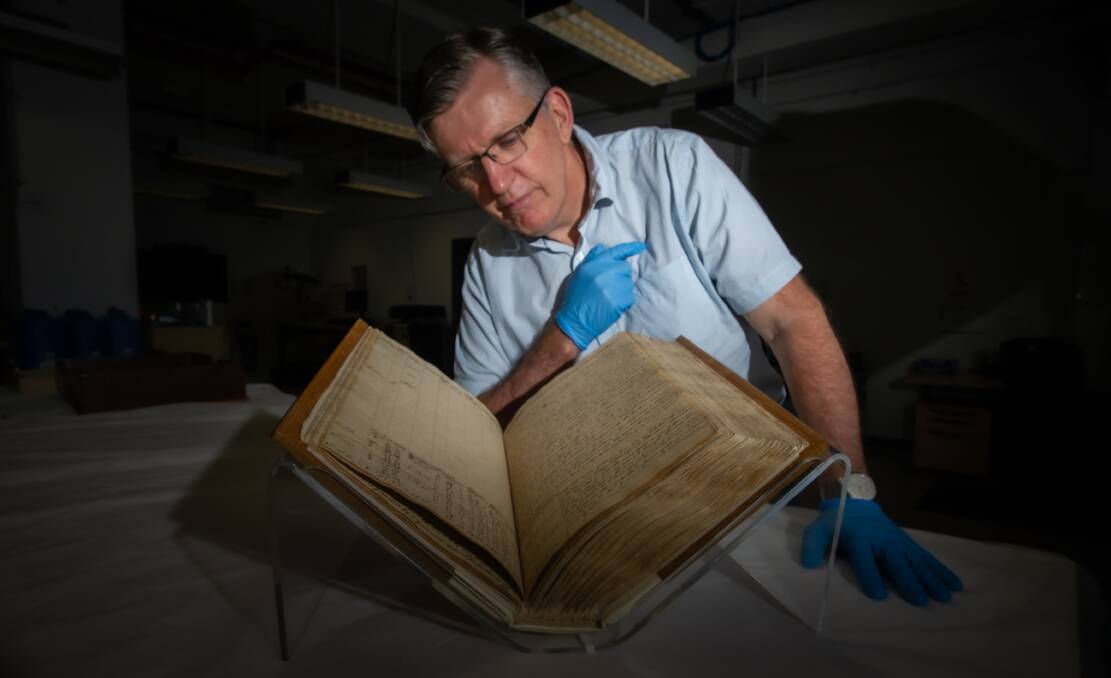It's either one of the greater historical finds in recent Australian history, or it raises more questions than it answers.
Regardless, the announcement that James Cook's ship the Endeavour has been located off Rhode Island in the United States caused a flurry of excitement on Thursday.
One of the more important vessels in Australian history, it's the one Cook famously sailed around the South Pacific before landing on the east coast of Australia in 1770.
Since 1999, maritime archaeologists have been investigating several 18th-century shipwrecks in a two-square-mile area of Newport Harbor, Rhode Island.
The Endeavour was scuttled there by the British 244 years ago and lay forgotten for more than two centuries.
For Ian Coates, the head of collections development at the National Museum of Australia in Canberra, the announcement was proof positive that the story of the Endeavour is a gift that keeps on giving.
Dr Coates co-curated the museum's major exhibition on the Endeavour voyage in 2020, staged to mark 250 years since Cook's fateful Antipodean journey.

He said the announcement by Australian National Maritime Museum that the wreck had been located was incredibly exciting for all those who had worked on the project.
"I guess it shows how this story just keeps going," he said.
"It's fantastic, because it's been one of the questions that people have wondered - what happened to the ship? We know that it hit the reef, and it got repaired, but what happened to it after that?"
And despite the war of words that broke out shortly afterwards over the announcement, with the Americans involved insisting the claims were premature, Dr Coates said it was one more twist in an endlessly fascinating journey.
"For me, it's probably a temptation to think, oh, that's the end of the story," he said. "But in many ways, we know from the work that we did with indigenous communities in 2020, that the story just continues.
"It's still being worked through by indigenous people who live along that coast about what the meaning was at the time to their ancestors and what the meaning continues to be today.
"So I see that it's a story that will continue on being told and retold and recast. That to me was one of the big things that came out of 2020, which is this story of two great cultures, two great civilisations meeting at that time in 1770, and the repercussions of that meeting continue on today."
The National Museum has in its collection one of the ship's anchors that was cast off on the seabed off the east coast of Australia after the ship became stuck on the Great Barrier Reef in 1770. The anchor is currently on loan to the Cooktown Museum in Far North Queensland.
Over at the National Library of Australia, where Cook's Endeavour journals have long had star billing, director of exhibitions Guy Hanson was watching the news with interest.
He said even just the possibility that the wreck could be that of the Endeavour was a thrill. "It brings history to life for me," he said.
"The research and work of maritime archaeology has been going on for some time, but it's just so great to see it brought to fruition and to find the actual Endeavour.
"Cook's voyages in the Pacific are often the focus of debates. They bring us into that whole realm of how Australia was settled and how Australia was explored.
"But it's still incredibly exciting to get to that place where you're actually touching something which is associated with with that voyage, which clearly was very important for our country. Whatever you think of it, that direct evidence is always very exciting for historians and researchers and archaeologists."
He said for those who worked with Cook-related manuscripts and artefacts, there was nothing quite as exciting as that proximity to history.
"There's nothing like looking at the page where Cook's words are preserved, and they're completely contemporaneous with the voyage," he said.
"That's that thing about working in archives or working with objects - you're working with something which the person who is the focus of your study actually touched and was there, so it really brings that kind of contact with the past to life."
From 1768 to 1771 Endeavour sailed the South Pacific, searching for "the Great Southern Land", and was later sold to private owners. It was deliberately sunk in 1778 by British forces during the American War of Independence.







